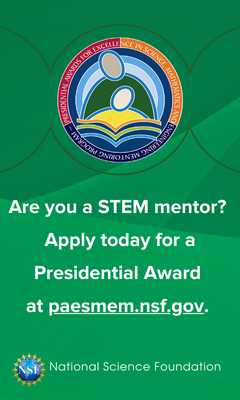June is National Caribbean American Heritage Month. Some of the largest Caribbean ancestry groups in the U.S. include Puerto Ricans, West Indians, Cubans, Dominicanos, Jamaicans, Haitians, Trinidadians and Tobagonians, Bajans, Belizeans, Bahamians, and U.S. Virgin Islanders.

Quoting the Institute of Caribbean Studies, the Census Bureau announced in a press release that “Caribbean immigrants have been contributing to the well-being of American society since its founding. Alexander Hamilton, the First Secretary of the Treasury was from the Caribbean island of Nevis. We count among our famous sons and daughters, Secretary of State Colin Powell, Cicely Tyson, W.E.B Dubois, James Weldon Johnson, Harry Belafonte, and Sidney Poitier to name a few."
The official campaign for a National Caribbean American Heritage Month began in 2004, and a proclamation making the resolution official was signed by President George W. Bush on June 5, 2006.
Xiomara Calderón-Colón is a senior materials scientist at the Johns Hopkins Applied Physics Laboratory. She works with nanomaterials, biomaterials, and microscopy to meet critical challenges through the application of science and technology. Calderón-Colón was a leader in the U.S. Army-funded Eye PATCH project, which is focused on developing biomaterials for ocular repair.
Calderón-Colón's performance earned her the Outstanding Technical Contribution in Industry Award at the 2015 Women of Color STEM Conference. In 2020, she was nominated for a Professional Achievement in Industry Award.
Calderón-Colón holds one patent, has four patents pending, and has disclosed 20 new ideas at the Applied Physics Laboratory. Additionally, she volunteers her time in a variety of educational outreach efforts. Calderón-Colón holds a bachelor’s degree in industrial chemistry from the University of Puerto Rico at Humacao and a Ph.D. in applied science and engineering from the University of North Carolina.
Calderón-Colón’s innovation in biomaterials, nanomaterials, composite materials, advanced coatings, and surface chemistry have led to national defense solutions. Her problem solving has been critical to the success of key projects at the Johns Hopkins Applied Physics Laboratory.
She has delivered highly-effective solutions to complex problems by collaborating with experts in the field. For the Army-funded Eye Protection And Treatment for Combat Healing (PATCH) project, Calderón-Colón developed a regenerative membrane made out of collagen, the ideal material for corneal repair.
Her ability to tackle unique material challenges has resulted in numerous publications in biomedicine and material sciences. Her contributions span from regenerative biomedical engineering to materials for protection and detection. In addition, Calderón-Colón is active in science, technology, engineering, and math (STEM) outreach efforts and serves as a role model to many young women with aspirations to pursue STEM careers.

